- Author Antonio Harrison [email protected].
- Public 2023-12-16 07:44.
- Last modified 2025-01-22 21:44.
Yuri Gavrilovich Rogov did not build his life according to ordinary standards. In the work of the famous geologist of the second half of the twentieth century, there was "the taste of salty sweat and the bitterness of a forest fire." He, continuing the exploration tradition, made a significant contribution to the field of mineral exploration.
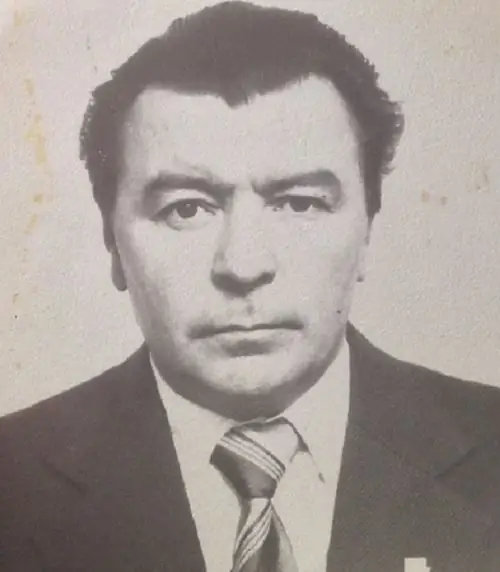
From biography
Yuri Gavrilovich Rogov was born in 1935 in Irkutsk. Graduated from the Mining and Metallurgical Institute. For 37 years he worked at the enterprise "Sosnovgeologiya" - from an ordinary member of expeditions to the chief geologist of the state enterprise "Sosnovgeologiya". He specialized in exploration of uranium deposits. He was awarded the Lenin Prize for his participation in the exploration and discovery of uranium deposits. Together with the head of the exploration party Alekseev Yu. A. and wife Rogova V. P. discovered the mineral charoite.
Carier start
In 1960, geologist Yuri Rogov was twenty-four years old. He recently graduated from the Mining Institute. There was only one season in his geological career. He was transferred to the border of the Irkutsk and Chita regions with Yakutia. In the first post-war years, geologist V. Ditmar worked here, but his team managed to investigate only a meager patch of a gigantic "white spot". Rogov's detachment built huts for housing, a warehouse. The village was named Kedrov.
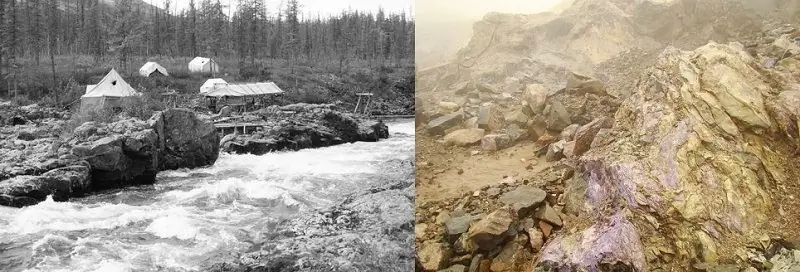
Pioneering itch
Geologists led by Alekseev Yu. A. went on the routes, as they say, sparing no legs. They so wanted to see what was in the next valley, what was behind the next ridge. Recalling that time, Yu. Rogov said that the itch of pioneering seized imperceptibly. It was dangerous to wander there: swamps, rocky heaps, elfin woods, the frantic Chara River, absolutely inaccessible to boats or motor boats. The animals came ashore, looked at the raft in bewilderment, but calmly. When an elk, a red deer or a bear with a teddy bear appeared, everyone froze. And around for hundreds of kilometers - no haze, no hut, no human footprint.
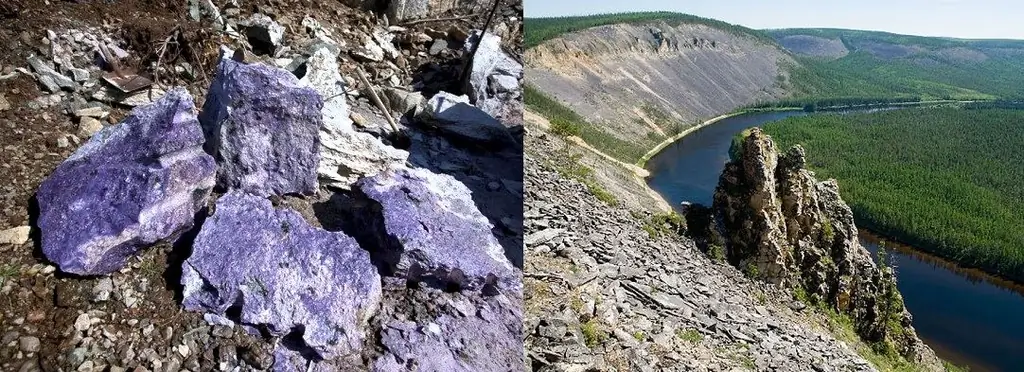
The everyday work of a geologist
Their faces were burnt in the merciless Charsky sun. They cursed mosquitoes, the great Murun bogs, slippery bumps, icy water and chomping mud. They cooked rhubarb compote, which grows everywhere here. The sour compote was pleasantly refreshing in the heat. Then, sweaty, dirty, covered with horseflies, they stepped wet and weary feet on the solid ground at the foot of the hill. Even the pilots of the helicopters believed that it was not so much to walk on these abysses that they were reluctant to fly over them - it became uncomfortable.

Opening Charoite
On a sultry summer day in 1960, Yu. Rogov went down to the stream and in a clearing came across a strange low boulder. A lilac stone, but as if covered with a whitish bloom. I tried to chop off a piece, but I couldn't. The boulder's unusual strength has spurred on. He beat off a piece - and it seemed to splash with lilacs. He thought his wife would like the curious colors. Vera Parfentievna became interested in blotches in the lilac stone and suggested that it was a new mineral. But somehow it was hard to believe that he might be unknown. Earlier the geologist V. G. Ditmar mentioned the discovery of a similar stone.
Although the procedure for approving new fossils in the Soviet Union was complicated, and it took years to research, Vera Rogova achieved recognition of the discovery. Apart from a deposit on the Chara River, this mineral has not been found anywhere on the planet.
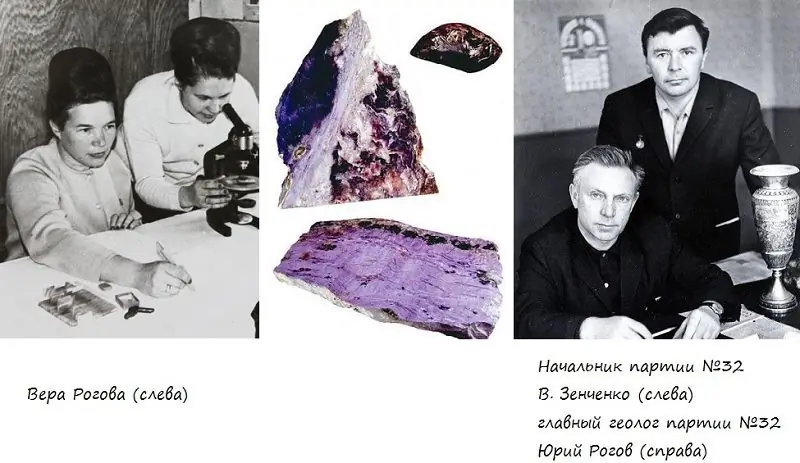
10 years later
This story happened to Yu. Rogov when he was abroad in 1970 on a business trip. At the Geological Museum of the Louvre, he was proudly informed that they had the complete collection of the planet's minerals. He took out a record and said that there was no such thing. His words caused a stir. Rogov was offered a lot of money for this stone, but he did not agree.
Triumphal procession of the Charoit
In 1977, charoite was recognized as a new mineral and began its journey to stone-cutting workshops. A prize for the IX International Film Festival in Moscow was made from it. When Secretary General Brezhnev had another round date, a box of charoite was made for him. When making jewelry, this stone is tested for radioactivity.
In 1979, scientists from the Pacific Rim countries came to Khabarovsk. They were overwhelmed by the stone splendor of the palace lobby where the congress was opening. It was a panorama of the Ussuri taiga, as if filled with mountain air and the rustle of rain-washed foliage. The whole picture is laid out of stones found in the regions along which the Baikal-Amur Mainline ran. There were more than forty varieties of Far Eastern gems, including charoite.
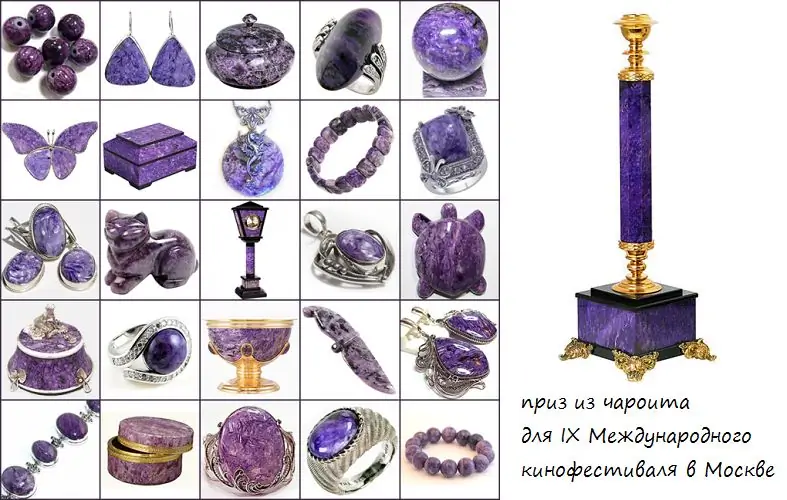
From personal life
The family and work life of this couple is closely intertwined. In the exploration party Vera Parfentievna worked as a mineralogist, and her husband Yuri Gavrilovich was the chief geologist. The head of the geological service of the combine, BN Khomentovsky, called their work a great success, because they were able to quickly and efficiently perform complex tasks, which was then so necessary.
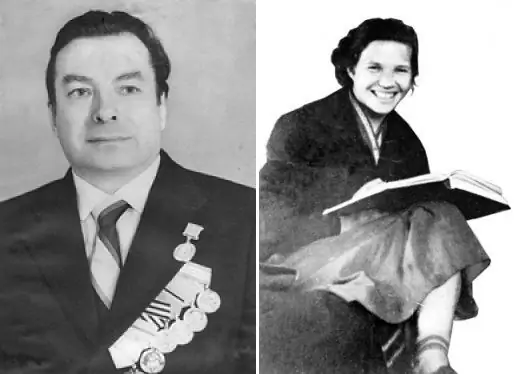
In the future, their family path ended. Geological technician Valentina Aleksandrovna became the second wife of Yu. Rogov.
Round and round …
The famous geologist of the second half of the twentieth century made a tangible contribution to geology. In the life of Yu. Rogov, who finished his life in 2009, there has always been a search, research, perseverance, faith, hope, love. And again the search, research, perseverance … Everything returned to normal.






